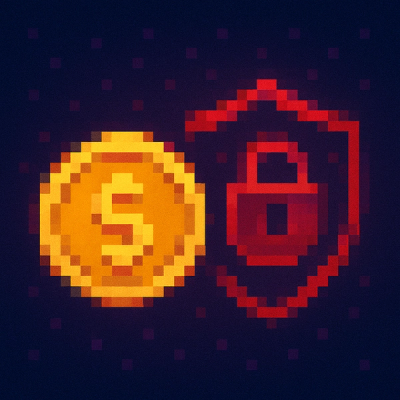
Security News
Security Community Slams MIT-linked Report Claiming AI Powers 80% of Ransomware
Experts push back on new claims about AI-driven ransomware, warning that hype and sponsored research are distorting how the threat is understood.
@intouchgroup/lighthouse-batch
Advanced tools
Lighthouse Batch is a tool to run multiple Google Lighthouse reports concurrently.
The tool makes multiple requests simultaneously, can handle HTTP or HTTPS domains, and is capable of testing sites which require Authentication.
You must have NodeJS version 12+ installed to use this module.
To check what version of NodeJS you have, launch Terminal on Mac or Powershell on Windows and type node -v.
Once you have NodeJS 12+, globally install the latest version of this module from Terminal or Powershell:
npm i -g @intouchgroup/lighthouse-batch
You can now run Lighthouse Batch from any folder on your computer using Terminal or Powershell.
When you open Terminal or Powershell, you will see a file path listed in the prompt. This is the current location of your Terminal or Powershell.
You can change locations using the cd FILE_PATH command. cd stands for "change directory" (go to a different folder), and is how you navigate using Terminal or Powershell.
Using Terminal or Powershell, navigate to the folder where you want to save the Lighthouse Batch reports. For example: cd Desktop/Reports
Now run the Lighthouse Batch tool from Terminal or Powershell with whatever arguments you want. For example: lighthouse-batch -s intouchsol.com
Arguments are how we tell lighthouse-batch what to do. Some arguments are required, while others are completely optional. Arguments can be passed in any order, but the value must come right after the argument text. For example:
lighthouse-batch --argument "This is the value of the argument"
A full list of available arguments with examples is presented below.
| Short name | Long name | What it does |
|---|---|---|
-h | --help | Shows all available arguments |
-s | --sites | Comma-separated list of URLs to test |
-t | --html | Generate HTML report |
-c | --csv | Generate CSV report |
-p | --params | Text to pass to Google's lighthouse tool |
-f | --filename | Manually set the name of the generated report |
-v | --verbose | Enables verbose logging |
1. Generate CSV reports for multiple sites:
lighthouse-batch -s intouchsol.com,google.com -c
Tests https://intouchsol.com and https://google.com
2. Generate HTML reports for multiple sites:
lighthouse-batch -s intouchsol.com,google.com -t
Tests https://intouchsol.com and https://google.com
3. Generate a CSV report named "MyBestReportYet":
lighthouse-batch -s intouchsol.com -c -f "MyBestReportYet"
Tests https://intouchsol.com
4. Use short or long names for arguments. These commands are exactly equivalent:
lighthouse-batch -s intouchsol.com -c -f "MyBestReportYet"
lighthouse-batch --sites intouchsol.com --csv --filename "MyBestReportYet"
5. Authentication is supported by passing encoded text to Google's lighthouse tool. We do this using the -p or --params argument.
First, make use of the Lighthouse Auth Formatter tool to encode your username and password. The encoded text should look similar to this:
--extra-headers="{\"Authorization\":\"Basic Y29keS5wZXJzaW5nZXI6VGhpc1Bhc3N3b3JkMTIzXw==\"}"
Next, use the encoded text as the value for the -p or --params argument. Make sure to wrap the encoded text in single quotes:
lighthouse-batch -s intouchsol.com -c -p 'ENCODED_TEXT_GOES_HERE'
Using our example encoded text above, the final command should look like this:
lighthouse-batch -s intouchsol.com -c -p '--extra-headers="{\"Authorization\":\"Basic Y29keS5wZXJzaW5nZXI6VGhpc1Bhc3N3b3JkMTIzXw==\"}"'
FAQs
CLI for batch processing Google Lighthouse audits
We found that @intouchgroup/lighthouse-batch demonstrated a not healthy version release cadence and project activity because the last version was released a year ago. It has 2 open source maintainers collaborating on the project.
Did you know?

Socket for GitHub automatically highlights issues in each pull request and monitors the health of all your open source dependencies. Discover the contents of your packages and block harmful activity before you install or update your dependencies.

Security News
Experts push back on new claims about AI-driven ransomware, warning that hype and sponsored research are distorting how the threat is understood.

Security News
Ruby's creator Matz assumes control of RubyGems and Bundler repositories while former maintainers agree to step back and transfer all rights to end the dispute.

Research
/Security News
Socket researchers found 10 typosquatted npm packages that auto-run on install, show fake CAPTCHAs, fingerprint by IP, and deploy a credential stealer.